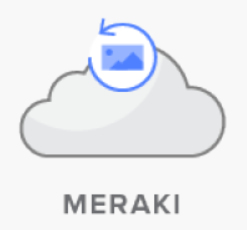Warranty & Support
70 –
80
of
134
Availability
Sort by
Advance Filters
Cisco
Cisco LIC-MS355-48X2-3YR Cisco Meraki MS355-48X2 Enterprise License and Support, 3 Years
For Meraki MS355-48X2 switches.All current Cisco Meraki products require valid licensing to operate. All licensing related operations can be performed from the Organization > Configure > License Info page of the Meraki Dashboard. For more information about the License Info page specifically, please refer to Merakiâs License Info Page article.Having licenses allows your organisationâs cloud-based online Dashboard, hosted by Meraki, to connect to and configure & manage all your Meraki devices. All devices are controlled under a single pane of glass in the dashboard.Everything is included in the cloud dashboard, which is just one license SKU.Meraki license includes: access to 24/7/365 support, hardware replacement under warranty, future firmware releases, one-time fixed cost for your network.New features come at no extra costâand there are no per-user license fees.License Start DateLicenses start consuming time from the date purchased, not the date they are added to an Organization.Note: Waiting to activate a license in Dashboard does not delay its activation date. There is no time benefit gained from delaying an activation.MS Licensing OptionsThe MS Switches have licenses on a per-model basis, so every MS model has a corresponding license, which includes variables such as number of ports and PoE availability. Please note that these licenses are non-transferrable between different switch models.
Part# LIC-MS355-48X2-3YR
SKU S19454
Cisco
Cisco LIC-MS355-48X-5YR Cisco 5Y, MS355-48X
For Meraki MS355-48X switches.All current Cisco Meraki products require valid licensing to operate. All licensing related operations can be performed from the Organization > Configure > License Info page of the Meraki Dashboard. For more information about the License Info page specifically, please refer to Merakiâs License Info Page article.Having licenses allows your organisationâs cloud-based online Dashboard, hosted by Meraki, to connect to and configure & manage all your Meraki devices. All devices are controlled under a single pane of glass in the dashboard.Everything is included in the cloud dashboard, which is just one license SKU.Meraki license includes: access to 24/7/365 support, hardware replacement under warranty, future firmware releases, one-time fixed cost for your network.New features come at no extra costâand there are no per-user license fees.
Part# LIC-MS355-48X-5YR
SKU S19454
Cisco
Cisco LIC-MS355-48X-7YR Cisco 7Y, MS355-48X
For Meraki MS355-48X switches.All current Cisco Meraki products require valid licensing to operate. All licensing related operations can be performed from the Organization > Configure > License Info page of the Meraki Dashboard. For more information about the License Info page specifically, please refer to Merakiâs License Info Page article.Having licenses allows your organisationâs cloud-based online Dashboard, hosted by Meraki, to connect to and configure & manage all your Meraki devices. All devices are controlled under a single pane of glass in the dashboard.Everything is included in the cloud dashboard, which is just one license SKU.Meraki license includes: access to 24/7/365 support, hardware replacement under warranty, future firmware releases, one-time fixed cost for your network.New features come at no extra costâand there are no per-user license fees.
Part# LIC-MS355-48X-7YR
SKU S19454
Cisco
Cisco LIC-MV-CA90-1YR Cisco Meraki MV 90 Day Cloud Archive License, 1Y
Featuring integrated solid state storage onboard every camera, the MV product line has revolutionized the typical surveillance architecture, completely eliminating the need for a network video recorder (NVR) or other storage server. Using optimized retention tools in the management dashboard, users can make informed decisions about balancing video quality with their organizational retention needs, ensuring they achieve the perfect balance.Still, there are times when legal requirements or other regional regulations may necessitate longer durations of continuous 24/7 recording or off-site backup. Cloud archive options for MV cameras fill in these gaps by allowing for 90 or 180 days of continuous backup recording.HOW DOES IT WORK?Copies of video are stored on both the camera and in the cloudVideo files stored in the cloud are always continuous, 24/7 footageThe camera is always prioritized over the cloud by the dashboard for video retrieval (unless the camera is either unreachable by the cloud or the timestamp of the video file being requested is older than what is supported)If the camera goes offline, it will still record footage as long as it has power, but this footage will not be backed up until it regains a connection to the WAN90 and 180 day license options are available, on a per-camera basisFigure 1: When cloud archive is enabled on a camera, and the camera is online, data flow will follow the standard path: both local and remote viewing devices will pull video directly from the camera memory. A backup video file is stored in the cloud, but not utilized in this case.Figure 2: When the camera is offline, or the timestamp for the video file exceeds the cameraâs hardware memory capacity, all video will be viewed as a remote stream, with viewing devices retrieving video data from the cloud.
Part# LIC-MV-CA90-1YR
SKU S19454
Cisco
Cisco LIC-MV-CA90-3YR Cisco Meraki MV 90 DAY CLOUD ARCHIVE LIC 3YR
Featuring integrated solid state storage onboard every camera, the MV product line has revolutionized the typical surveillance architecture, completely eliminating the need for a network video recorder (NVR) or other storage server. Using optimized retention tools in the management dashboard, users can make informed decisions about balancing video quality with their organizational retention needs, ensuring they achieve the perfect balance.Still, there are times when legal requirements or other regional regulations may necessitate longer durations of continuous 24/7 recording or off-site backup. Cloud archive options for MV cameras fill in these gaps by allowing for 90 or 180 days of continuous backup recording.HOW DOES IT WORK?Copies of video are stored on both the camera and in the cloudVideo files stored in the cloud are always continuous, 24/7 footageThe camera is always prioritized over the cloud by the dashboard for video retrieval (unless the camera is either unreachable by the cloud or the timestamp of the video file being requested is older than what is supported)If the camera goes offline, it will still record footage as long as it has power, but this footage will not be backed up until it regains a connection to the WAN90 and 180 day license options are available, on a per-camera basisFigure 1: When cloud archive is enabled on a camera, and the camera is online, data flow will follow the standard path: both local and remote viewing devices will pull video directly from the camera memory. A backup video file is stored in the cloud, but not utilized in this case.Figure 2: When the camera is offline, or the timestamp for the video file exceeds the cameraâs hardware memory capacity, all video will be viewed as a remote stream, with viewing devices retrieving video data from the cloud.
Part# LIC-MV-CA90-3YR
SKU S19454
Cisco
Cisco LIC-MV-CA90-5YR Cisco Meraki MV 90 Day Cloud Archive License
Featuring integrated solid state storage onboard every camera, the MV product line has revolutionized the typical surveillance architecture, completely eliminating the need for a network video recorder (NVR) or other storage server. Using optimized retention tools in the management dashboard, users can make informed decisions about balancing video quality with their organizational retention needs, ensuring they achieve the perfect balance.Still, there are times when legal requirements or other regional regulations may necessitate longer durations of continuous 24/7 recording or off-site backup. Cloud archive options for MV cameras fill in these gaps by allowing for 90 or 180 days of continuous backup recording.HOW DOES IT WORK?Copies of video are stored on both the camera and in the cloudVideo files stored in the cloud are always continuous, 24/7 footageThe camera is always prioritized over the cloud by the dashboard for video retrieval (unless the camera is either unreachable by the cloud or the timestamp of the video file being requested is older than what is supported)If the camera goes offline, it will still record footage as long as it has power, but this footage will not be backed up until it regains a connection to the WAN90 and 180 day license options are available, on a per-camera basisFigure 1: When cloud archive is enabled on a camera, and the camera is online, data flow will follow the standard path: both local and remote viewing devices will pull video directly from the camera memory. A backup video file is stored in the cloud, but not utilized in this case.Figure 2: When the camera is offline, or the timestamp for the video file exceeds the cameraâs hardware memory capacity, all video will be viewed as a remote stream, with viewing devices retrieving video data from the cloud.
Part# LIC-MV-CA90-5YR
SKU S19454
Cisco
Cisco LIC-MX67-SDW-3Y Cisco Meraki Secure SD-WAN Plus
Secure SD-WAN Plus LicenseIdeal for organizations reliant on apps served by SaaS, IaaS, or data center locations.Highlights:Cloud-based centralized management with open APIs and 24Ã7 enterprise supportTrue zero-touch provisioning and firmware updatesSite-to-site Auto VPNClient VPNTraffic shaping and prioritizationAutomatic WAN failoverSub-second site-to-site VPN failover and dynamic path selectionSource based routing and IP-based local breakoutCellular failoverGeo-based firewall rulesContent filteringIntrusion Detection & PreventionCisco Advanced Malware Protection (AMP)Advanced QoE analytics - Web app health - VoIP health - WAN health
Part# LIC-MX67-SDW-3Y
SKU S19454
Cisco
Cisco LIC-MX250-SDW-1Y Cisco Meraki Secure SD-WAN Plus
Secure SD-WAN Plus LicenseIdeal for organizations reliant on apps served by SaaS, IaaS, or data center locations.Highlights:Cloud-based centralized management with open APIs and 24Ã7 enterprise supportTrue zero-touch provisioning and firmware updatesSite-to-site Auto VPNClient VPNTraffic shaping and prioritizationAutomatic WAN failoverSub-second site-to-site VPN failover and dynamic path selectionSource based routing and IP-based local breakoutCellular failoverGeo-based firewall rulesContent filteringIntrusion Detection & PreventionCisco Advanced Malware Protection (AMP)Advanced QoE analytics - Web app health - VoIP health - WAN health
Part# LIC-MX250-SDW-1Y
SKU S19454
Cisco
Cisco LIC-MX250-SDW-3Y Cisco Meraki Secure SD-WAN Plus
Secure SD-WAN Plus LicenseIdeal for organizations reliant on apps served by SaaS, IaaS, or data center locations.Highlights:Cloud-based centralized management with open APIs and 24Ã7 enterprise supportTrue zero-touch provisioning and firmware updatesSite-to-site Auto VPNClient VPNTraffic shaping and prioritizationAutomatic WAN failoverSub-second site-to-site VPN failover and dynamic path selectionSource based routing and IP-based local breakoutCellular failoverGeo-based firewall rulesContent filteringIntrusion Detection & PreventionCisco Advanced Malware Protection (AMP)Advanced QoE analytics - Web app health - VoIP health - WAN health
Part# LIC-MX250-SDW-3Y
SKU S19454
Cisco
Cisco LIC-MX64-SDW-1Y Cisco Meraki Secure SD-WAN Plus
Secure SD-WAN Plus LicenseIdeal for organizations reliant on apps served by SaaS, IaaS, or data center locations.Highlights:Cloud-based centralized management with open APIs and 24Ã7 enterprise supportTrue zero-touch provisioning and firmware updatesSite-to-site Auto VPNClient VPNTraffic shaping and prioritizationAutomatic WAN failoverSub-second site-to-site VPN failover and dynamic path selectionSource based routing and IP-based local breakoutCellular failoverGeo-based firewall rulesContent filteringIntrusion Detection & PreventionCisco Advanced Malware Protection (AMP)Advanced QoE analytics - Web app health - VoIP health - WAN health
Part# LIC-MX64-SDW-1Y
SKU S19454
Get a Quote

Item(s) added to cart

©2025 IT VISION NETWORKS CANADA INC – All Rights Reserved. BN: 717291223 OCN: 1001150813

 0
0







